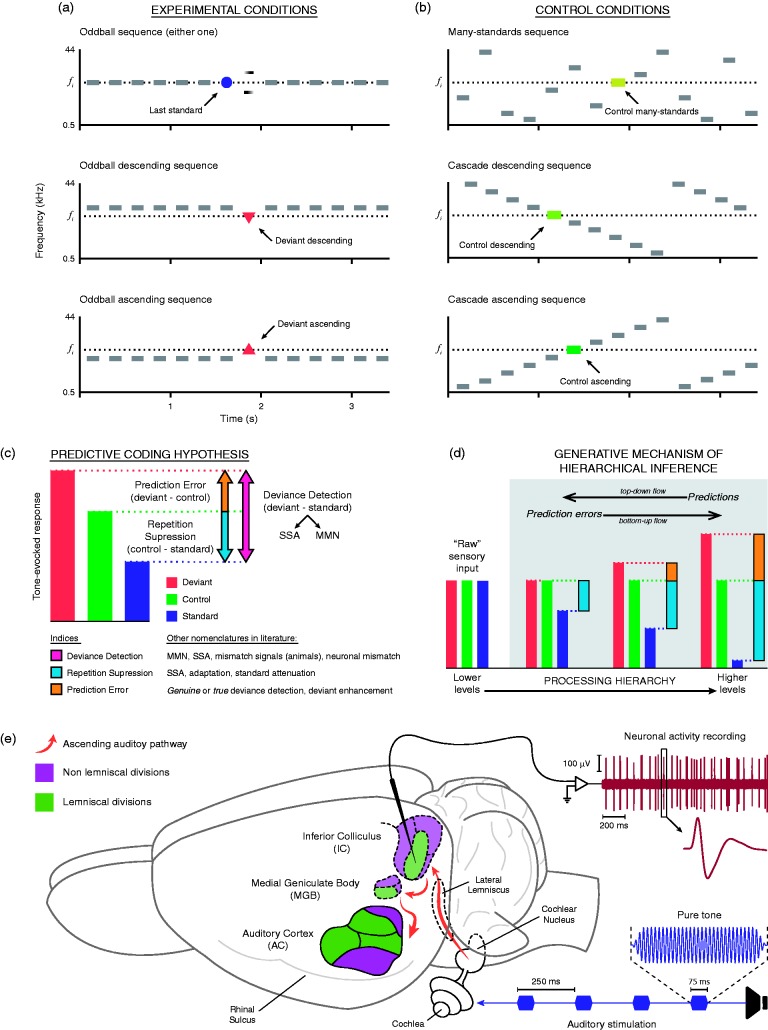Figure 1.
(a) Classical oddball paradigm, displaying three possible experimental conditions for a given fi target tone. (b) Control sequences highlighting the fi target tone. In the many-standards sequence, the target tone is embedded within a random succession of assorted equiprobable tones, making impossible for the system to establish a predictive rule. The two versions of the cascade sequence (descending and ascending) are compared with the corresponding version of the oddball sequence. In both versions, the target tone is embedded in a predictable succession of equiprobable tones, allowing the system to establish a predictive rule that is not broken by the appearance of the target tone, as opposed to what happens in the oddball sequence. (c). Decomposition of deviance detection signals (deviant–standard) according to the interpretation of the predictive coding hypothesis. The difference between the response to the target tone in the control sequence and its evoked response when presented as a standard in the oddball sequence would constitute the component of repetition suppression. On the other hand, the difference between the deviant-evoked response and the response to that target tone within a control sequence, if positive, would unveil a component of prediction error. (d). Explanation of how the generative mechanism of hierarchical or Bayesian inference would work, showing the modulation of evoked responses normalized to the control condition. “Raw” sensory input (i.e., information about the physical features of the auditory stimuli disregarding its context) would be fed into the mechanism of inference to be modulated along the auditory processing hierarchy according to their contextual features and interstimular relationships. Higher order levels of processing would abstract increasingly complex rules to generate top-down predictions capable of explaining away incoming input and save processing resources. When predictions match the input at lower levels, sensory coding is optimized and perception arises. But when there is a mismatch, lower order levels covey a bottom-up prediction error to higher order levels to update the predictive model. (e) Sketch of a typical experimental setup for cellular recording (in rat brain), in which neuronal activity is recorded from different auditory stations while stimulating with sequences of pure tones.
MMN = mismatch negativity; SSA = stimulus-specific adaptation. Adapted from Parras et al. (2017).

